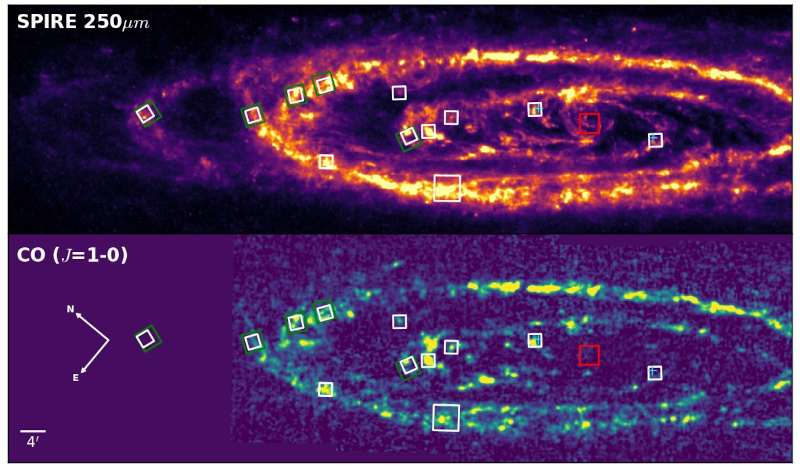
Data Release 1 is Now Avilable!

While the primary science driver for HASHTAG is the dust continuum science, how this releates to the gas is important, and the CO(J=3-2) line can also be a significant contaminant of the 850µm band. To make sure we cover a range of conditions across M31 we use pointings across a range of locations and environments to ensure we measure a range of conditions (these are shown in the Figure below).
For all but one regions we observed using HARP 2' × 2' Jiggle maps to create small fully sampled maps, and a 4' × 4' raster map. The fields were selected to include:

In total these 12 regions will cover an area of 60 square arcminutes, and several memeners of the team have a complimentary survey to observe the bulge. Our observations are designed to reach an antenna temperature of 13 mK with a 2.6 km/s channel width. This requres a total of 55 hours of Band 3 time.